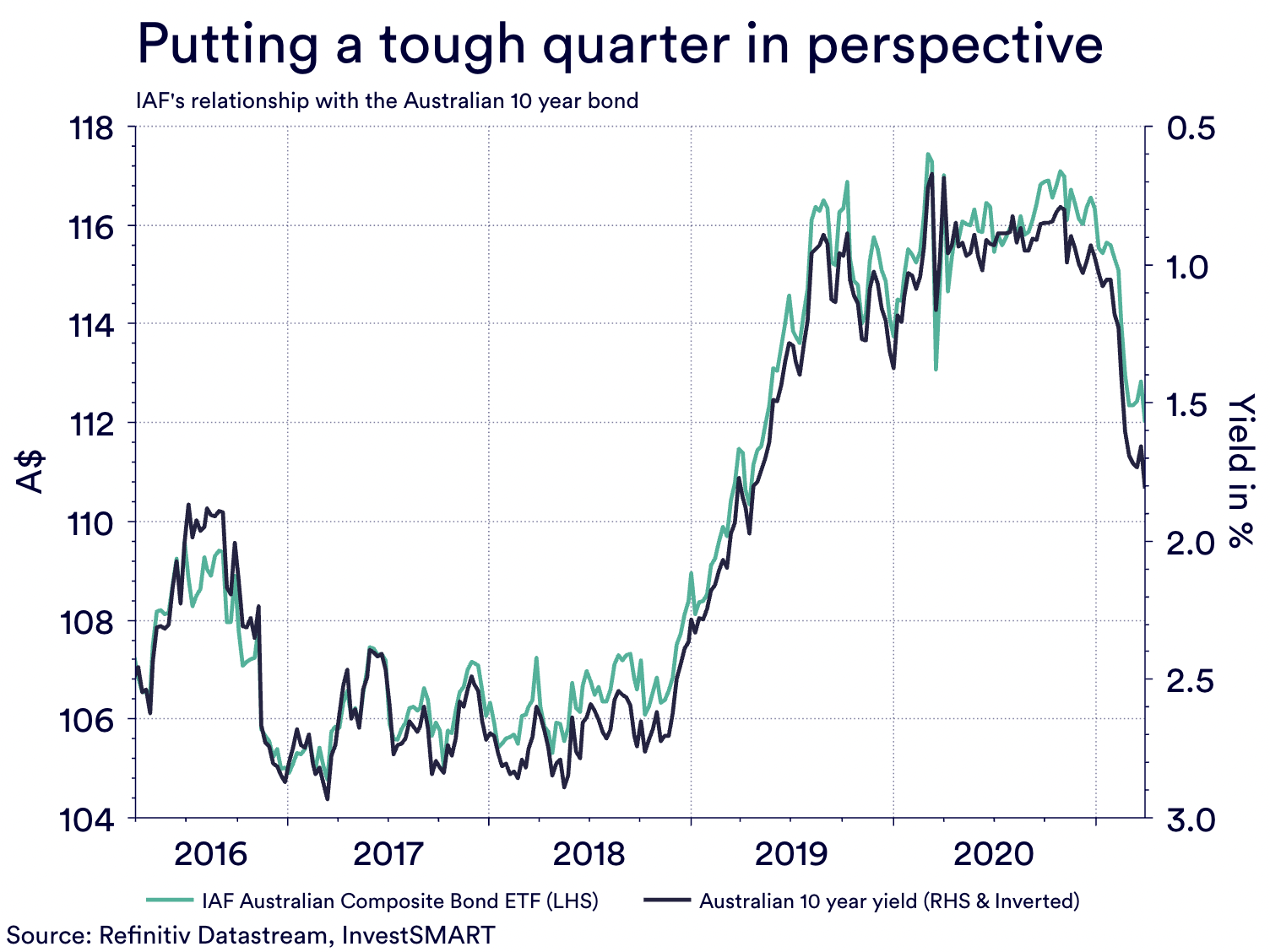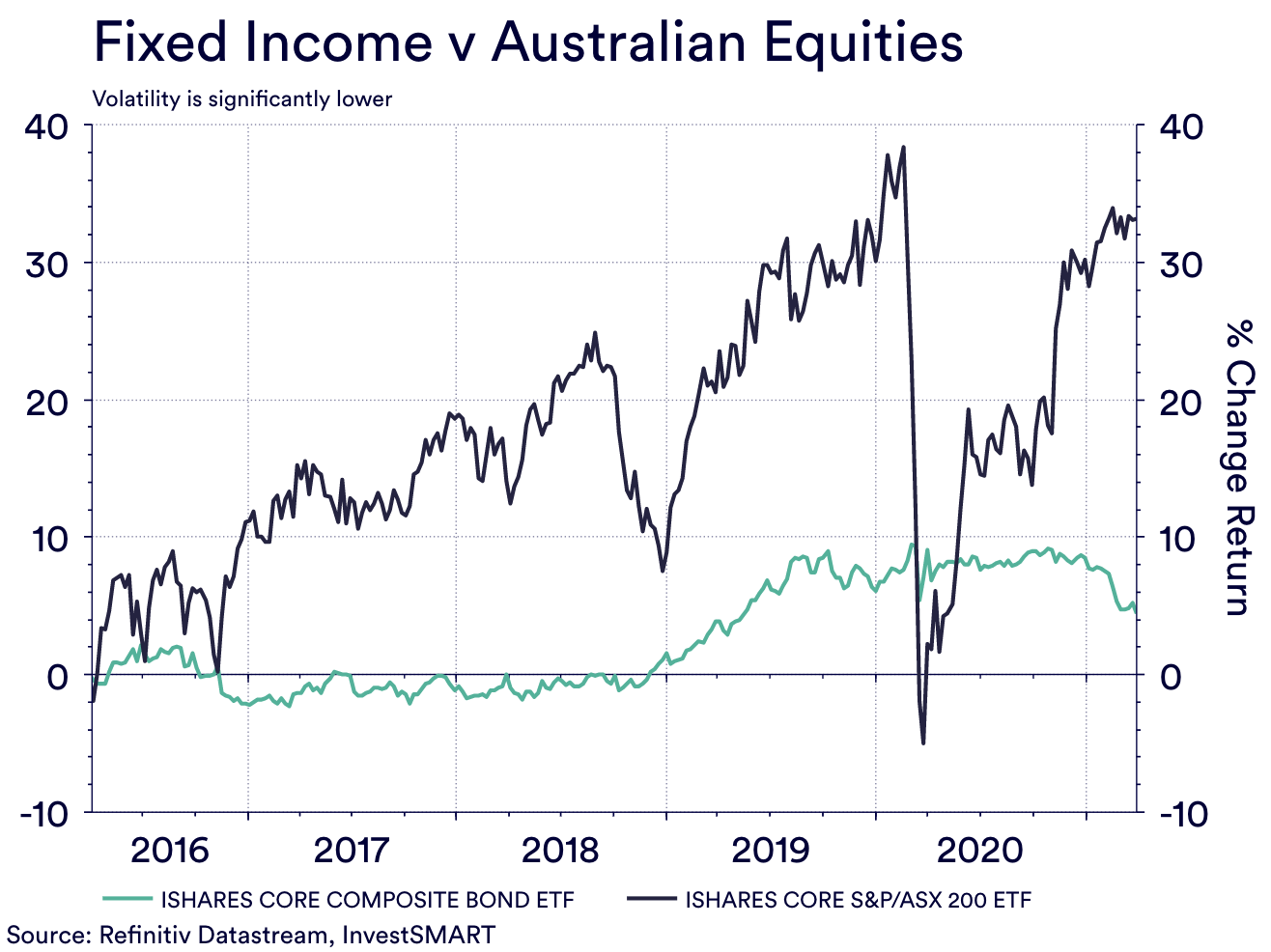InvestSMART's Interest Income Portfolio: March Quarter Review 2021
- The portfolio declined 3.97 per cent after fees in the March quarter.
- No changes were made to the portfolio during the quarter.
- The yield on the portfolio is approximately 2.17 per cent.
Fixed income is one of the core asset classes of any investment portfolio. It provides a strong and solid foundation; its income component provides a consistent long-term income rate, and the capital component is majority backed by sovereign governments or tier-1 corporations.
However, fixed income, like any floating market, can be subject to short bouts of volatility, its normal advantage is that these bouts of volatility are mild in comparison to its riskier peers such as equities and property but that’s not always so.
Which brings us to the past quarter’s performance of the Interest Income Portfolio. The major holding is the iShares Australian Fixed Income ETF (IAF). As a sovereign bond ETF its biggest holding is the Australian government 10-year bond and as this chart shows very clearly, as the Australian 10-year bond was sold off in the quarter causing its yield to rise, IAF’s sell off mirrored that of the 10-year.

The fall in bonds both domestically and internationally has created debate over the past quarter about the merit of fixed income, with some even suggesting it’s facing an ‘existential crisis’ and that it no longer has a place for investors.
However, this is disingenuous, as the same chart above shows the incredible positive movement throughout 2019. We even warned investors back then that that kind of appreciation was abnormal in the fixed income sphere (in the third quarter of 2019 the portfolio appreciated 8.29 per cent).
We are here to remind you of the same point but in reverse. This portfolio has returned over 2 per cent per annum over the past 5 years which in the context of a 4 per cent fall over the past 12 months, is impressive.
Furthermore, the performance of the Interest Income Portfolio during this period needs to be looked at in the context of risk and your tolerance to risk. If we take the same 5-year period and apply the market movements of the IAF to the iShares ASX 200 ETF (IOZ), the movement in equities is significantly higher in both directions. In fact, so much so that during the peak of the COVID selloff last year, equities lost all gains of the past and dropped well below the returns of bonds, perfectly illustrating that for low-risk investors, fixed income is still a much better option

What the chart also shows is that over the medium to longer term, fixed income has been a very solid and strong contributor. This is why we know that fixed income continues to play a vital role in your investment goal and time horizons. Investors should continue to apply their personal risk tolerance to their investment goals and although fixed income has declined in the past quarter, its overall long-term performance shows that it is one of the best assets to absorb volatility in the market.
Frequently Asked Questions about this Article…
The Interest Income Portfolio declined by 3.97% after fees during the March quarter.
No, there were no changes made to the portfolio during the March quarter.
The yield on the Interest Income Portfolio is approximately 2.17%.
Fixed income is considered a core asset class because it provides a strong foundation with consistent long-term income and is mostly backed by sovereign governments or tier-1 corporations.
Fixed income typically experiences milder bouts of volatility compared to riskier assets like equities and property.
The sell-off of the Australian 10-year bond caused its yield to rise, which mirrored the sell-off in the iShares Australian Fixed Income ETF (IAF), a major holding in the portfolio.
Yes, fixed income remains a viable option as it has shown strong long-term performance and is a good choice for low-risk investors, especially during market volatility.
Investors should consider their personal risk tolerance and long-term investment goals, as fixed income continues to play a vital role in absorbing market volatility despite recent declines.
















